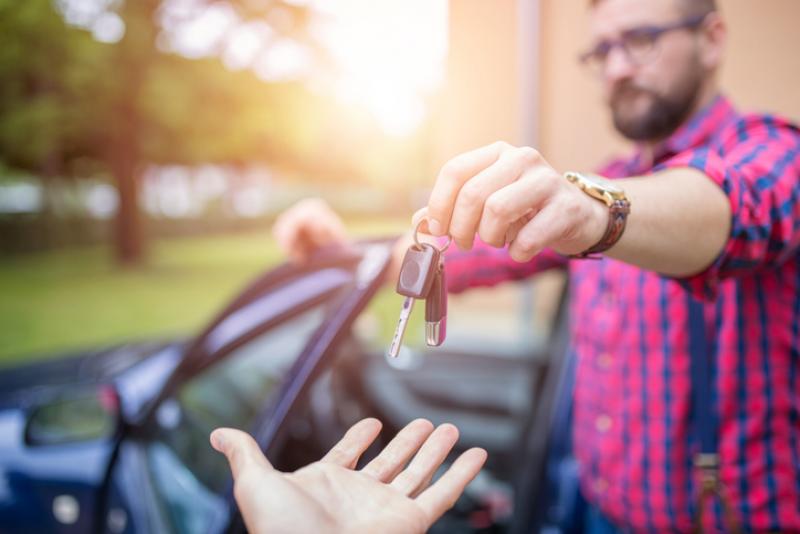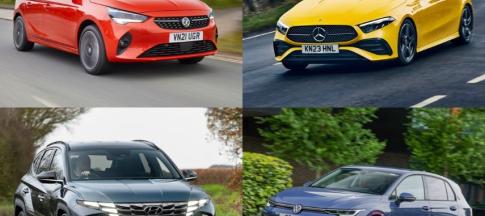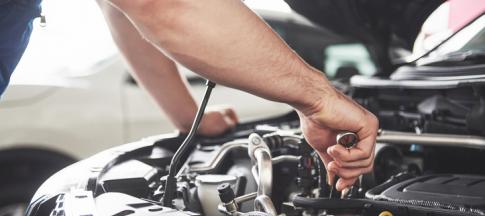
Should I buy a used car or a new car?
Although a new car is one of life’s most gratifying rewards, for the majority of car buyers in the UK buying a used car makes lots of sense.
New cars are expensive and can involve paying large sums of money up front.
New vehicles depreciate in value quickly, losing around 40% of their value after a year and up to 60% by the end of three years*.
The choice of brand new cars is narrower: there’s not such a variety of models to choose from so you may not find exactly what you want.
And, while advances in technology mean that new cars are getting cleaner and more fuel-efficient to run, manufacturing a new car means using new materials and creating harmful emissions, so buying new rather than used can be more costly to the environment.
On the other hand, there are some great used car deals to be had. And the arrival of longer factory warranties means there’s now greater peace of mind for those buying pre-owned cars.
For example, ‘nearly new’ cars with low mileages up to a few thousand miles can offer great value for money. If they’ve been pre-owned by business fleets they will most likely be short on luxuries and equipment but they will have been serviced by a reputable dealer and come with a solid service record.
Decide what used car you want
Narrow your choice down to the make and model you want. This makes choosing cars less daunting and helps you feel focused and informed when it comes to discussing price and requirements.
Keep in mind your needs including size, comfort and number of people you need to carry.
If you have children, bear in mind the extra space you needed for car seats, prams and everything else that comes with having a little one. You may want to consider whether the car has ISOFIX points and is compatible with your car seat. Our guide to child car seats has all the information you need on what to look for when choosing a seat for your little one.
Do some research into things like appropriate engine size and fuel efficiency – do you really need a powerful off-roader with a 3.0 litre engine for the school run, for example?
See our article on choosing the right car to help you find the perfect run around for you.
How much should I spend on a used car?
Once you’ve chosen your model, set a car-buying budget and stick to it.
Keep in mind other costs above and beyond the amount you’ll be paying for the car – things like any credit repayments, road tax, insurance, fuel, repairs and the cost of parts in case something needs replacing.
Remember, it’s a buyers market. There are plenty of cars for sale across the UK so it’s worth waiting until you find exactly what you want at the right price before you offer to buy.
Depending on the cost of your used car, you may want to consider car finance. At Admiral, you could get a car finance quote in just a few minutes.
Where should I buy a used car from?
There are a number of different ways you can buy a new car; from a dealer or a private seller, online or in person.
Buying a used car from a dealer
If you buy from a dealer’s demonstration fleet, the specification of the car will include the kinds of extras that help with demonstrations and resale, which can be exactly the level you’re looking for. Any running-in problems and glitches will have been smoothed out by the dealership by the time you drive away, too.
Buying a used car from a private seller
Private sellers can offer great deals as well. You just need to know what to look out for when you’re browsing vehicles so that you get exactly what you want, you don’t pay too much and you don’t buy a faulty or dangerous motor.
Compared with buying from a car dealership there’s less comeback on individual sellers after purchase, but many people have genuine products to sell at reasonable prices so searching the market can be worth it.
Buying a used car online
The internet is not just useful for finding and browsing cars for sale. You can use it to run checks on vehicles you’re interested in, too.
To check the MOT status of a vehicle, visit GOV.UK/check-mot-status.
To see a vehicle’s full history, use a tool like My Car Check or HPI Check which flags everything from failed MOTs to plate changes to being a previous write-off.
Running a car through a vehicle checker will let you match the advertised mileage with the actual mileage too. Clocking – the practice of winding the odometer back to show fewer miles and increase the asking price – is a risk with used cars.
To get an idea of the price you could pay for a vehicle you’re interested in, put the car's details into a car valuation site.
What vehicle checks should you make when buying a used car?
If you find a car you like, take a good look at it and make sure you take it for a test drive.
You need to look for any damage or anything concerning on both the interior or exterior of the car. Plus, complete a few checks like turning on the ignition and taking it for a test drive.
Read our guide on 10 things to inspect when buying a used car.
Should a used car come with a spare key?
Find out whether the car comes with extra keys. Keys can cost more than £100 to replace so if there’s only one you should factor this into the price.
Likewise, adaptors for locking wheel nuts (if they’re fitted).

What paperwork should come with a used car?
Any used car you buy needs to come with the following:
- V5C Registration Certificate (car logbook)
- MOT (if over three years old)
- Service history
- Handbook (expensive to replace)
Check when the cam belt was changed or when it’s due to be changed on the service history. If a cam belt is allowed to break, repairs can cost thousands of pounds and often a new engine is needed.
Check that the registration and chassis numbers written on the V5 match those on the vehicle. If they don’t match, the car may have been cloned (the practice of giving one car the identity of another of the same make, model and colour by replacing the number plates).
The seller's name and address should also appear on the logbook as the last registered keeper. A seller asking you to meet anywhere other than their home could be a sign that the vehicle isn’t theirs to sell.
Tips for haggling on a used car
Try to get the price you want. With second hand cars, no price is set and you should never worry about walking away if you’re not happy with the amount you’re being asked to pay. As long as your requirements are realistic and fair, the seller may come back to you if they want a sale.
If they don’t, keep looking.
Find out how Admiral Car Finance could help you afford your used car.
Changing car ownership
The DVLA needs to know when you’ve bought your car so they can transfer it to your name.
This is usually something the seller takes care of, but you should make sure you tax your new car before driving it, as the tax isn’t transferred to you when you buy a vehicle. To do this, you’ll need the green ‘new keeper’ slip from the car's previous owner.
They should then post the log book (V5C) to the DVLA or tell the DVLA online you’re the new keeper.
If you don’t get a new log book within six weeks, you can register your vehicle yourself online or by filling out form V62 and posting it to the DVLA. There’s more information on this on the DVLA website.
*Based on 10,000 miles a year, according to research published by The AA in 2012

